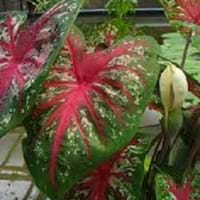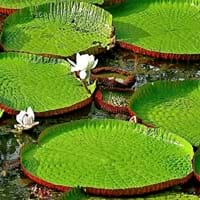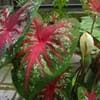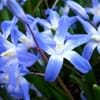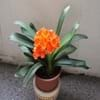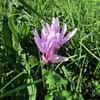Life Span
Annual and Perennial
Annual
Type
Tender Perennial
Aquatics
Origin
Southern Europe, Mediterranean
Hybrid origin
Types
Not Available
Not Available
Habitat
gardens, Grassland, Prairies, tropical environments, Tropical regions
along watercourse
USDA Hardiness Zone
7-9
10-15
Sunset Zone
4, 5, 6, 14, 15, 16, 17, 18, 19, 20, 21, 22, 23, 24
21,22
Habit
Mat-forming
Spreading
Flower Color
White, Green
White, Pink, Light Pink
Flower Color Modifier
Bicolor
Not Available
Fruit Color
Green
Not Available
Leaf Color in Spring
Gray Green
Green, Yellow green, Bronze
Leaf Color in Summer
Gray Green
Green, Yellow green
Leaf Color in Fall
Gray Green
Green, Yellow green
Leaf Color in Winter
Light Green
Green, Yellow green
Leaf Shape
Linear
Disc shaped
Plant Season
Spring, Summer, Fall, Winter
Spring, Summer, Fall
Sunlight
Full Sun, Partial Sun
Full Sun
Type of Soil
Loam, Sand
Clay, Loam
The pH of Soil
Neutral, Alkaline
Acidic, Neutral
Soil Drainage
Well drained
Not Available
Bloom Time
Spring, Late Spring, Early Summer, Summer, Late Summer, Early Fall
Summer, Indeterminate
Tolerances
Drought
Wet Site
Where to Plant?
Container, Ground, Pot
In Water
How to Plant?
Seedlings, Stem Cutting
Seedlings
Plant Maintenance
Medium
Medium
Watering Requirements
Allow soil to be completely dry in between waterings, Water Deeply, Water less during winter
Keep immersed in water
In Summer
Lots of watering
Aquatic Plant
In Spring
Moderate
Aquatic Plant
In Winter
Average Water
Aquatic Plant
Soil pH
Neutral, Alkaline
Acidic, Neutral
Soil Type
Loam, Sand
Clay, Loam
Soil Drainage Capacity
Well drained
Not Available
Sun Exposure
Full Sun, Partial Sun
Bright direct sunlight
Pruning
Cut or pinch the stems, Do not prune during shooting season, Prune if you want to improve plant shape, Prune prior to new growth, Remove deadheads
Remove damaged leaves
Fertilizers
No fertilizers needed
No fertilizers needed
Pests and Diseases
fungus, Insects, Red blotch
Aphids, Snails
Plant Tolerance
Drought
Frost, Full Sun
Flower Petal Number
Single
Double
Foliage Texture
Fine
Bold
Foliage Sheen
Matte
Glossy
Attracts
Bees, Birds, Butterflies
Insects, Moths, Snakes
Allergy
Skin irritation
Skin irritation
Aesthetic Uses
Beautification, Showy Purposes
Cottage Garden, Showy Purposes
Beauty Benefits
Not Available
Making cosmetics
Environmental Uses
Air purification
No fertilizer, pesticides, or herbicides needed, Very little waste
Medicinal Uses
No Medicinal Use
Not Available
Part of Plant Used
Whole plant
Flowers
Other Uses
Showy Purposes
Used as Ornamental plant
Used As Indoor Plant
No
Sometimes
Used As Outdoor Plant
Yes
Yes
Garden Design
Alpine, Container, Edging, Foundation, Groundcover, Mixed Border, Rock Garden / Wall
Feature Plant, Tropical, Water Gardens
Botanical Name
CALADIUM 'Aaron'
VICTORIA 'Longwood Hybrid'
Common Name
Aaron Caladium, Angel Wings, Fancy-leaved Caladium
Giant Waterlily, Longwood Hybrid Giant Waterlily
In Hindi
Aaron Caladium
पानी लिली
In German
Aaron Caladium
Riesen- Seerose
In French
Aaron Caladium
géant nénuphar
In Spanish
Aaron Caladium
lirio de agua
In Greek
Aaron τροπικό φυτό
νούφαρο
In Portuguese
Aaron Caladium
waterlily
In Polish
Aaron Caladium
Lilia wodna
In Latin
Aaron Caladium
ingens aqua lilium,
Phylum
Tracheophyta
Angiosperms
Class
Liliopsida
Equisetopsida
Order
Alismatales
Nymphaeales
Family
Araceae
Nymphaeaceae
Clade
Angiosperms, Monocots
Angiosperms
Tribe
Not Available
Not Available
Subfamily
Aroideae
Not Available
Number of Species
Not Available
Not Available
Properties of Aaron Caladium and Giant Waterlily
Wondering what are the properties of Aaron Caladium and Giant Waterlily? We provide you with everything About Aaron Caladium and Giant Waterlily. Aaron Caladium doesn't have thorns and Giant Waterlily doesn't have thorns. Also Aaron Caladium does not have fragrant flowers. Aaron Caladium has allergic reactions like Skin irritation and Giant Waterlily has allergic reactions like Skin irritation. Compare all the properties and characteristics of these two plants. Find out which of these plant can be used as indoor plant. If you are interested to decorate your house and garden, find out aesthetic uses, compare them and select the plant which will beautify your surrounding. Along with beautification, try comparing medicinal and edible uses of Aaron Caladium and Giant Waterlily and you can choose the plant having best and most benefits.
Season and Care of Aaron Caladium and Giant Waterlily
Season and care of Aaron Caladium and Giant Waterlily is important to know. While considering everything about Aaron Caladium and Giant Waterlily Care, growing season is an essential factor. Aaron Caladium season is Spring, Summer, Fall and Winter and Giant Waterlily season is Spring, Summer, Fall and Winter. The type of soil for Aaron Caladium is Loam, Sand and for Giant Waterlily is Clay, Loam while the PH of soil for Aaron Caladium is Neutral, Alkaline and for Giant Waterlily is Acidic, Neutral.
Aaron Caladium and Giant Waterlily Physical Information
Aaron Caladium and Giant Waterlily physical information is very important for comparison. Aaron Caladium height is 30.50 cm and width 30.50 cm whereas Giant Waterlily height is 510.00 cm and width 37.00 cm. The color specification of Aaron Caladium and Giant Waterlily are as follows:
Aaron Caladium flower color: White and Green
Aaron Caladium leaf color: Gray Green
Giant Waterlily flower color: White, Pink and Light Pink
- Giant Waterlily leaf color: Green, Yellow green and Bronze
Care of Aaron Caladium and Giant Waterlily
Care of Aaron Caladium and Giant Waterlily include pruning, fertilizers, watering etc. Aaron Caladium pruning is done Cut or pinch the stems, Do not prune during shooting season, Prune if you want to improve plant shape, Prune prior to new growth and Remove deadheads and Giant Waterlily pruning is done Remove damaged leaves. In summer Aaron Caladium needs Lots of watering and in winter, it needs Average Water. Whereas, in summer Giant Waterlily needs Aquatic Plant and in winter, it needs Aquatic Plant.
